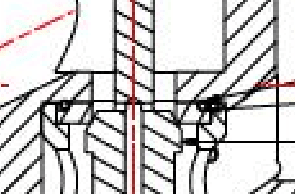Carlloss
Mechanical
- Feb 20, 2012
- 21
Hi all,
Not sure if this is the right place for this post but could not find anything closer (feel free to point me into different group if you think there is one).
I have recently faced a situation which is beyond my knowledge so I hope having other user view may help with solving it. I work for company who design and manufacture pressure regulators. Two months ago we supplied one of our high flow units to customer who design and fabricate fire fighting systems. System idea is fairly straight forward, when there is a need for it to be on following happens, 8 Nitrogen 300 bar cylinders are activated at the same time to deliver Nitrogen, pressure is reduced on first valve to 30-50 bar Nitrogen then goes via our regulator with further reduction to 6-8 bar, after this Nitrogen is delivered to water tank and push it via series of pipes.
Problem we are seeing is that regulator pressure should stop at the preset point (say 7 bar) once reached but what is does it goes far beyond in and activate PRV. This only happens under dead end scenario, where the water tank downstream valve is closed and we are actually not pushing anything. The pressure regulator is leak free, it maintains preset pressure under flowing condition, it did maintain set point during factory test (we were flowing much less Nitrogen and were filling empty cylinder not water tank), it is dome loaded with external reference line to sens pressure outlet pressure, flow values are well with it capacity and we supplied numbers of dome and spring loaded version of it in past. Line size is 2" and flow via regulator is in a region of 25 000 SL/min.
I do not know if the system conditions/parameters affects Nitrogen and we face situation when there is some pressure recovery??? Have no idea why this happens.
Any ideas, thoughts are highly appreciated. Thanks.
Karol
Not sure if this is the right place for this post but could not find anything closer (feel free to point me into different group if you think there is one).
I have recently faced a situation which is beyond my knowledge so I hope having other user view may help with solving it. I work for company who design and manufacture pressure regulators. Two months ago we supplied one of our high flow units to customer who design and fabricate fire fighting systems. System idea is fairly straight forward, when there is a need for it to be on following happens, 8 Nitrogen 300 bar cylinders are activated at the same time to deliver Nitrogen, pressure is reduced on first valve to 30-50 bar Nitrogen then goes via our regulator with further reduction to 6-8 bar, after this Nitrogen is delivered to water tank and push it via series of pipes.
Problem we are seeing is that regulator pressure should stop at the preset point (say 7 bar) once reached but what is does it goes far beyond in and activate PRV. This only happens under dead end scenario, where the water tank downstream valve is closed and we are actually not pushing anything. The pressure regulator is leak free, it maintains preset pressure under flowing condition, it did maintain set point during factory test (we were flowing much less Nitrogen and were filling empty cylinder not water tank), it is dome loaded with external reference line to sens pressure outlet pressure, flow values are well with it capacity and we supplied numbers of dome and spring loaded version of it in past. Line size is 2" and flow via regulator is in a region of 25 000 SL/min.
I do not know if the system conditions/parameters affects Nitrogen and we face situation when there is some pressure recovery??? Have no idea why this happens.
Any ideas, thoughts are highly appreciated. Thanks.
Karol

